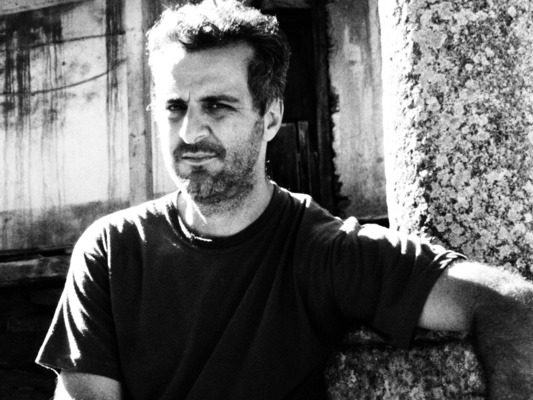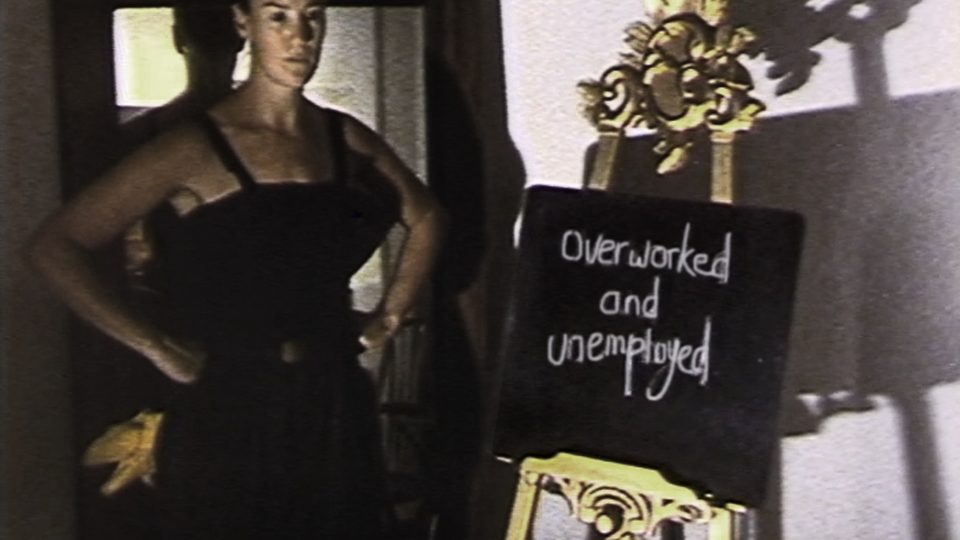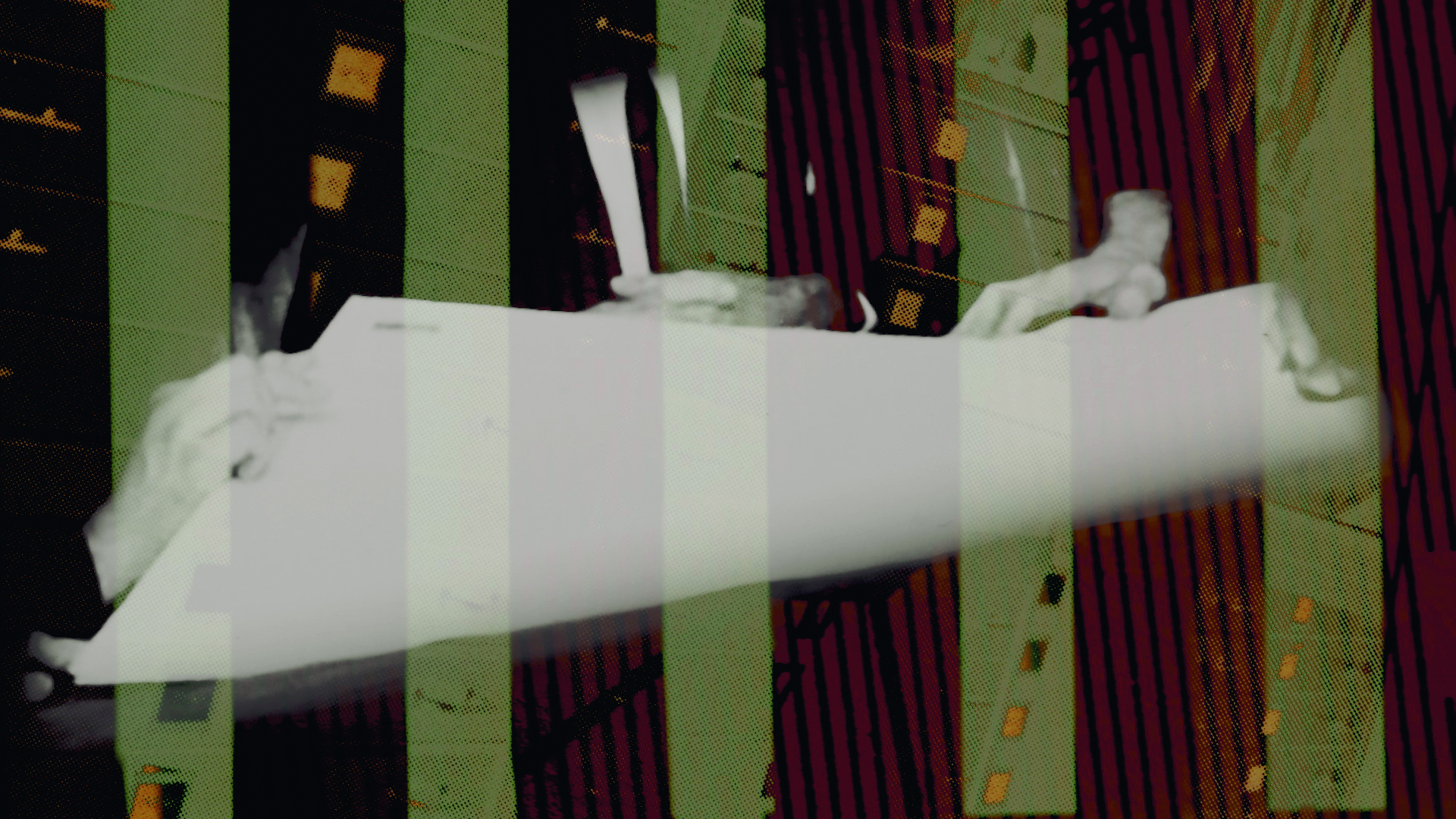
Janie Geiser and Ericka Beckman are among the most exciting contemporary American artists working on the border of performance, collage, stop-motion animation and experimental film. Both have long-standing careers in the arts, and are associated with the Los Angeles art scene: Beckman went to CalArts in the 1970s, and Geiser currently teaches there, in the theater department. While their films are distinct, both work in a highly collaborative manner, integrating various areas, such as music, choreography, theater and, in Geiser’s case, puppetry.
Geiser’s latest film, Valeria Street (2018), follows in the vein of her earlier film collages. Geiser, who grew up in Baton Rouge, Louisiana, and later moved to New York City, before coming to L.A., fluidly combines her disparate thematic interests—popular culture, Americana, psychoanalysis, film noir, and feminism. Her films are often thematic leaps into the unconscious, a psychic excavation of the murky and the hidden, which she brings to light with a systematic albeit intuitive method.
At one of the talks Geiser gave this year at Olhar de Cinema Festival in Curitiba, Brazil, where her retrospective was curated by programmer Aaron Cutler, Geiser mentioned that she derives her approach partly from her father, who was an engineer. Thus there is always a balance between the precise, careful work, the collage that is a calibrated, measured visual assemblage, and the looser, more spontaneous amalgam of forms, juxtapositions and themes.
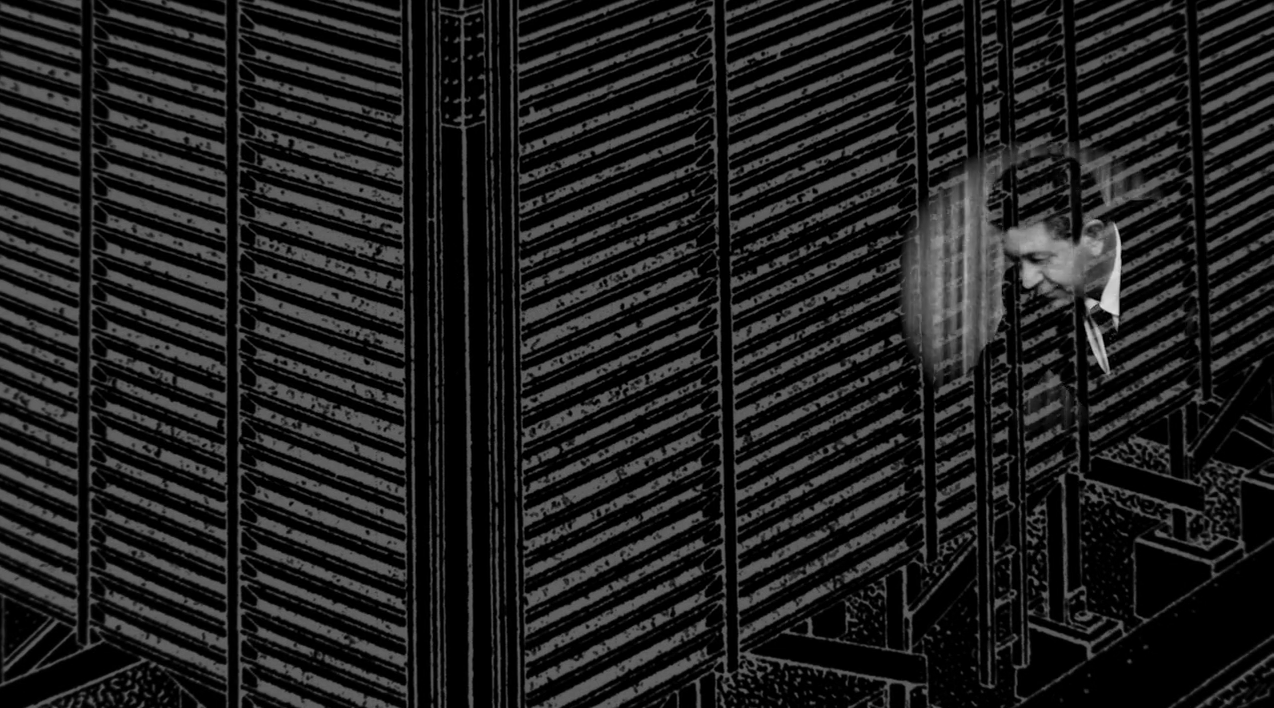
Still from Janie Geiser’s Valeria Street
In Valeria Street the figure of the father emerges directly. Geiser uses a photograph of him and his colleagues, standing around a conference table, as a starting point. Geometric shapes, graphs and numbers float before us in combinations that at times recall the beautifully proportionate cerebral works of Sol Lewitt. Yet Valeria Street, like Geiser’s other films, is also sensual and hallucinatory. The shapes pulse, they emerge, overlap, and the factual, solid world of the photograph is placed side by side the more illusive forms, or subject to direct intervention. In this sense, the film echoes Geiser’s persistent preoccupation with the indexical value of photography and film, her examination of just what in an image is truly fixed, what in its cultural context can be taken as a given, and what is occult, impregnable.
In Valeria Street the American industry, its efficiency and promise, encapsulated as the “American way of life,” emerges as a mirage. The melancholy of such a transformation, the visual degradation or alternation of the image, its shadowing, or haunting, is heightened by the repetition of the father figure—the face, the amplified male hands, a displacement and disfiguration of the sturdy, authorial body. The partly mournful configuration is offset by the sheer playfulness and multiplicity of the compositions.
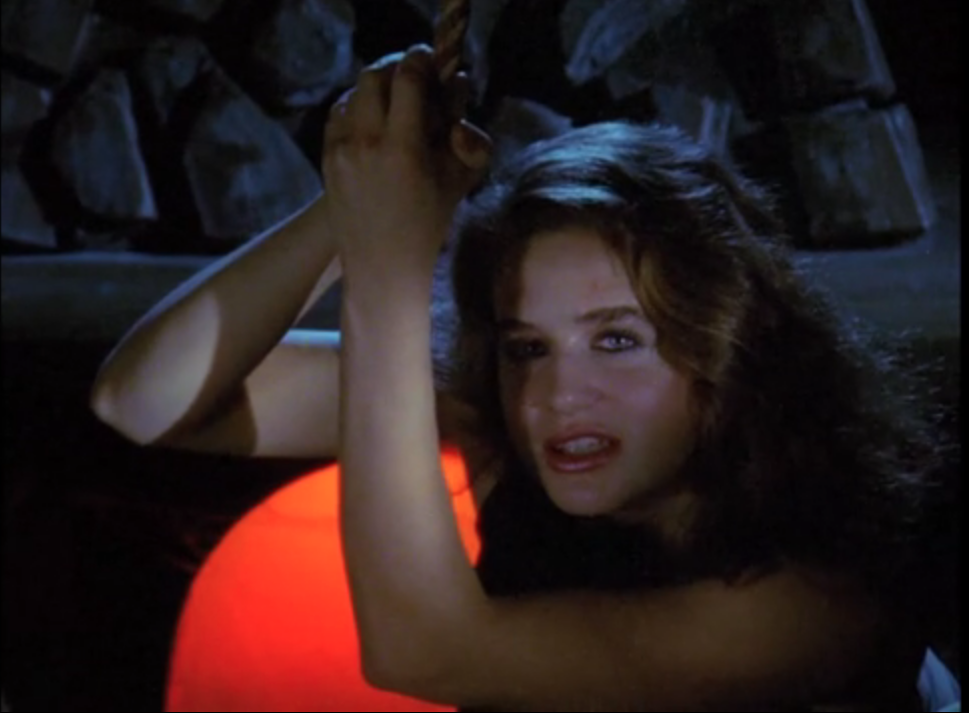
Still from Ericka Beckman’s Cinderella
We also see such playfulness in Beckman’s Cinderella (1986), a 16mm film in which Beckman reworks the infamous story into a much more clearly fraught, tortured postmodern tale of a young woman caught between the mass-media messages and her own sense of self. The eponymous Cinderella is poised to play with and against Prince, and at various times it’s not always clear who’s the bait, or who’s to be caught, with Cinderella as an active agent of seduction, but also questioning Prince’s ulterior, financial motifs.
Beckman, who in her interview for Frieze Magazine, noted her interest in “a coded system within space,” employs it in her short film to create a kind of outmoded video game, or virtual space, in which objects have a physical presence but can also materialize, suddenly and at will—as both on a computer screen and in fairy tales (seeing the green dress suddenly appear on Cinderella’s body we may recall apps that create our avatars to help us arrange our wardrobe in endless combinations, in seconds). In this sense, Beckman creates cultural continuity of magical thinking, both as self-constructed, negotiated, but also socially imposed reality. Her vision comes across as eerily anachronistic and yet ironically pertinent.
The coding in space that Beckman discusses is primarily graphic, three-dimensional and performative, translated into the two-dimensional screen space. Within it, various layers and forces act upon each other. Disparate time frames coexist: the theatrical props, vaguely dated, create a fairytale aura, yet without any real sense of continuous architectural space. The castle appears as a deliberately childish drawing, or is suggested by an opulent room with surrealist elements, and often gives way to a graph, a flattened computer plane. The actors’ movements are highly theatrical, then give way to choreography closer to modern dance and musical. Similarly, while the short opens to accordion music, it then changes to disco.
Both Geiser and Beckman share a love for silent cinema and for early experimental films, and their shorts bear that love in their fine sense of the silhouette and the maximum use of contour, musicality and shadow. They relish on one hand the theatricality of early-cinema heroines, and the subliminal messages that such films presented, and, on the other hand, the use of a human figure as a graphic symbol, a line or vector in the visual plane.
Valeria Street can be currently seen in the NYFF Projections Program 1: Place Revisited. Cinderella plays in the Ericka Beckman Program, also in Projections. Both filmmakers will be present at the festival in person for the Q & A’s.
